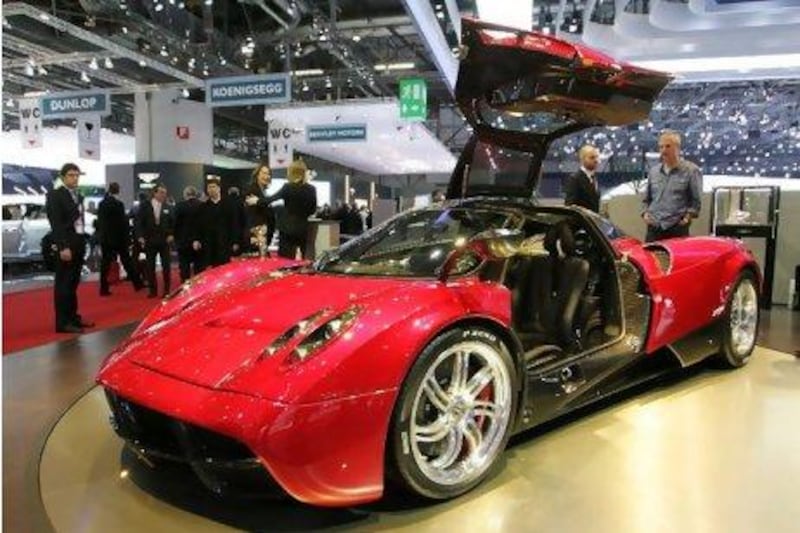Pagani's new Huayra has taken a last-minute sidestep around homologation problems threatening to turn it into a track-day special.
Already postponed despite being shown at exclusive events to customers around the world, the AMG V12-powered Huayra has struggled to meet stringent US crash and emissions standards.
Pagani officials confirmed the low-volume, independently owned Italian supercar maker, famed for its original Zonda range, had hoped to qualify for homologation on its technical and engineering data alone, but fell foul of the same ruling that caught out Lotus's Evora.
It has now re-engineered the Huayra's crash behaviour to include the two-stage passenger air bags demanded by the US government and, it believes, has cleared the final hurdle to sell cars in what it sees as its most lucrative market.
"They will often accept your engineering data for your first car, which they did with the Zonda, but they will want to see you meet everything for a second one, and that's what's happened here," observed one industry source close to the issue.
Another key Pagani supplier confirmed the same thing, insisting: "In US homologation, you get one free hit but they make you pass everything the second time, which Lotus also found out."
The company's founder, Horatio Pagani, has a wealth of experience in carbon-fibre and the Huayra has a monocoque chassis made from a carbon-fibre and titanium weave, but it breaks further from supercar tradition by using carbon-fibre subframes at the rear to hold the engine and also at the front to act as an energy-absorbing crash structure.
Besides crash homologation, the other US homologation issue the Huayra has is its emissions, which sources have said has failed NOx tests.
The dry-sumped V12, prepared to Pagani specifications by AMG to have 690hp of power and 1,000Nm of torque from its 6.0L capacity, has not met the test limits despite being engineered with them in mind by Mercedes-Benz's performance offshoot. "From our point of view, the problem is that the show car is also the homologation car, and it gets fired up for customers, then driven a handful of metres to show them it runs, then it gets driven back again, 10 or 20 metres at a time," an AMG source confirmed.
"That being done repeatedly has fatally poisoned the catalyst on the test car, so it won't pass emissions regulations. That's easy to fix, though. They just fit it with a new engine."
The rear-wheel-drive supercar runs an XTrac gearbox and weighs a claimed 1,350kg, with 0-to-100kph times said to be in the sub-three second range.
It is due to go on sale in spring next year priced at about Dh4.8 million.






